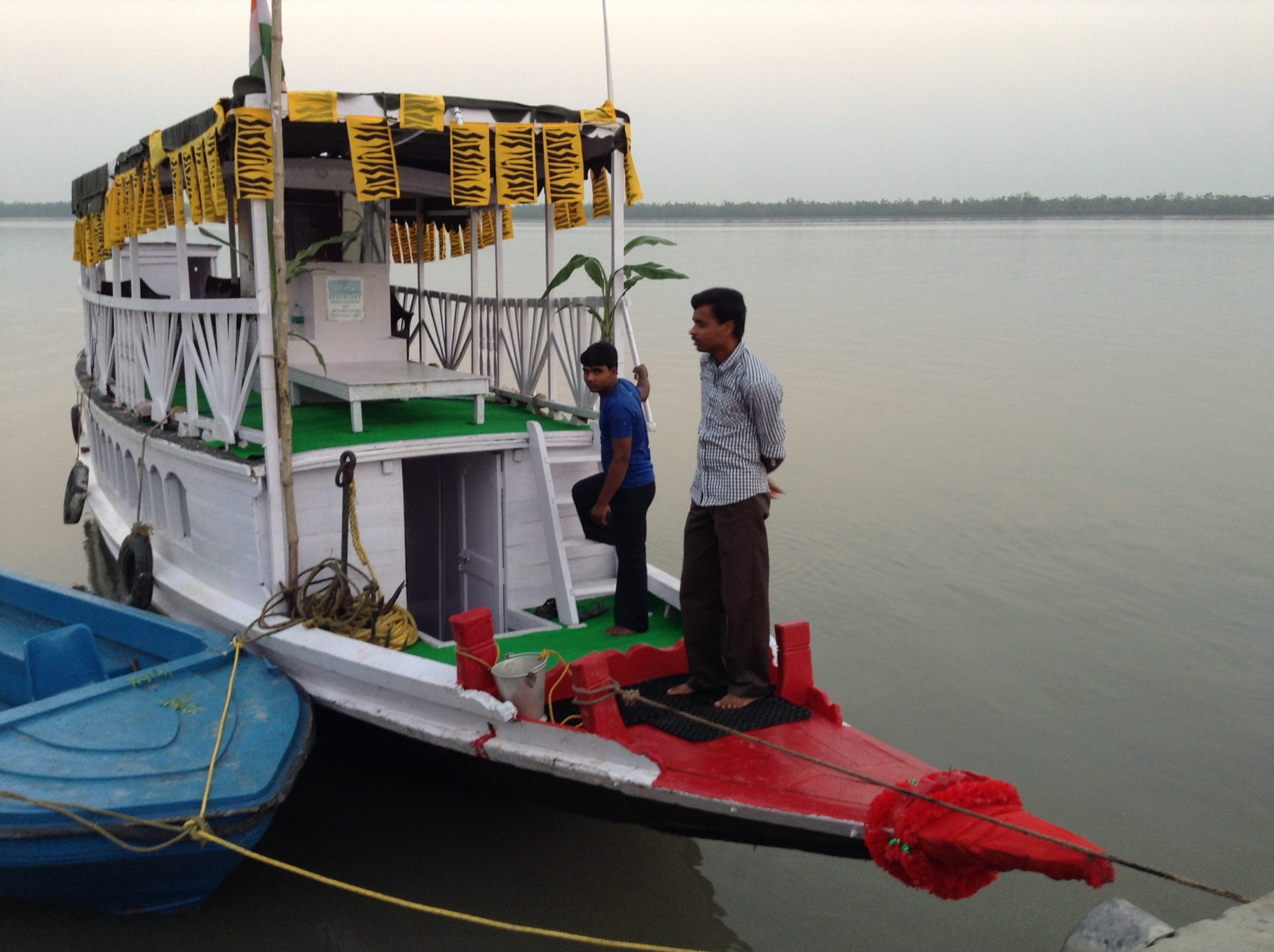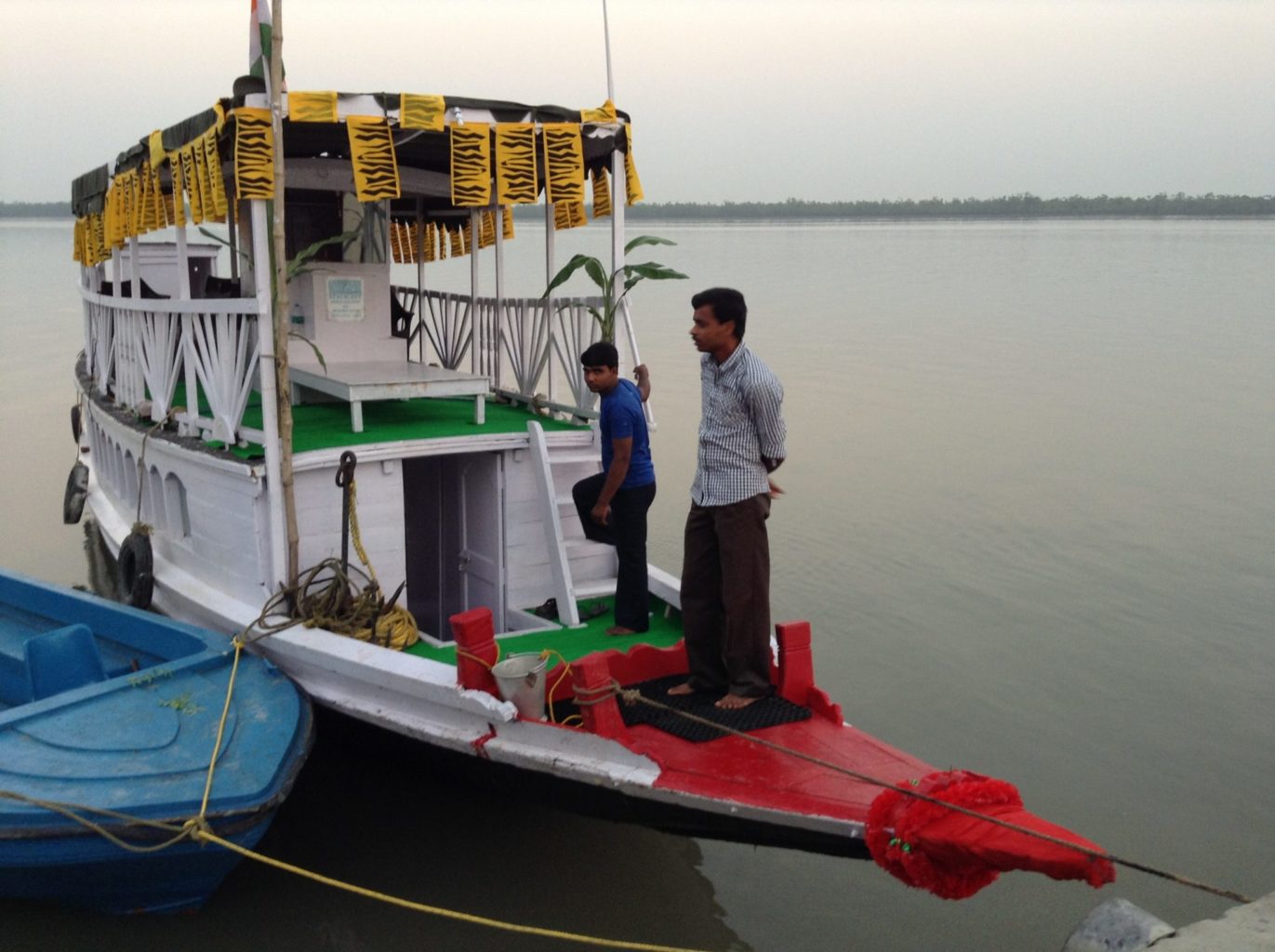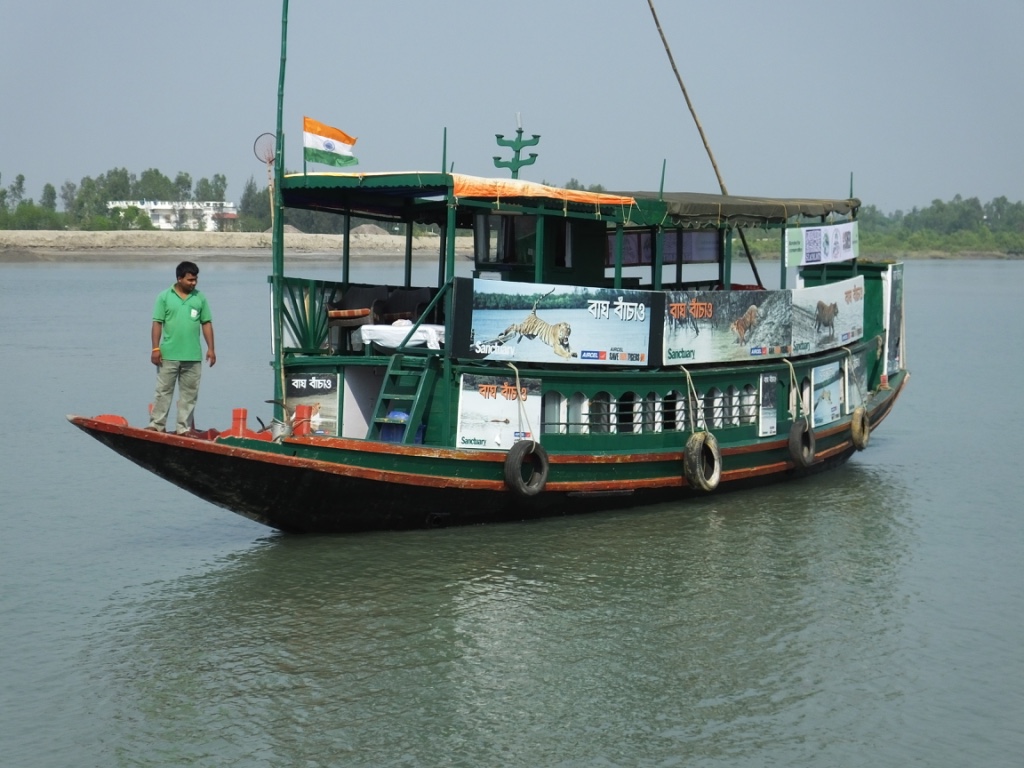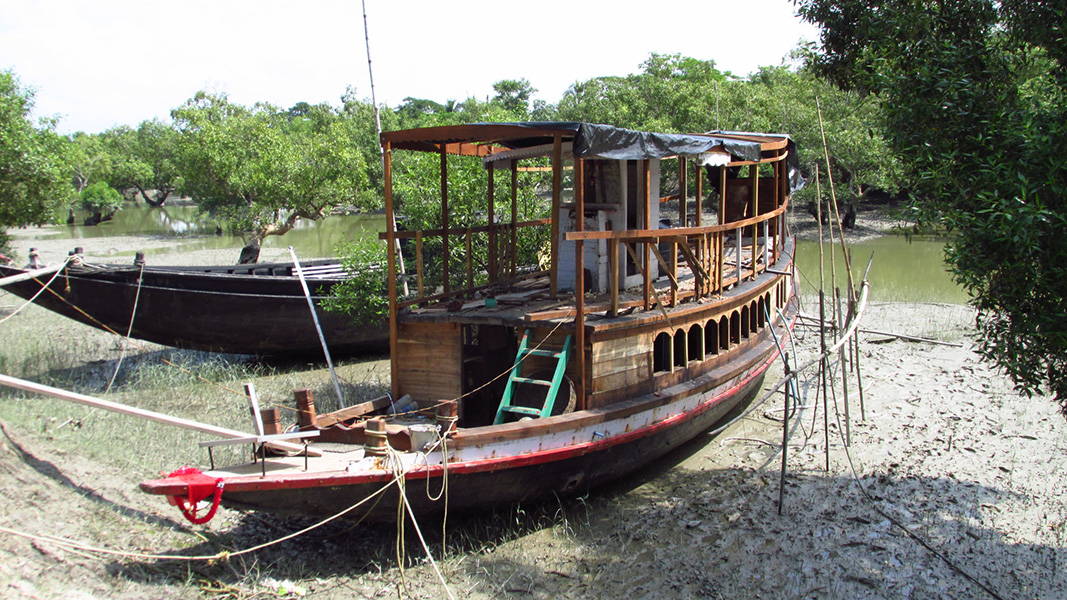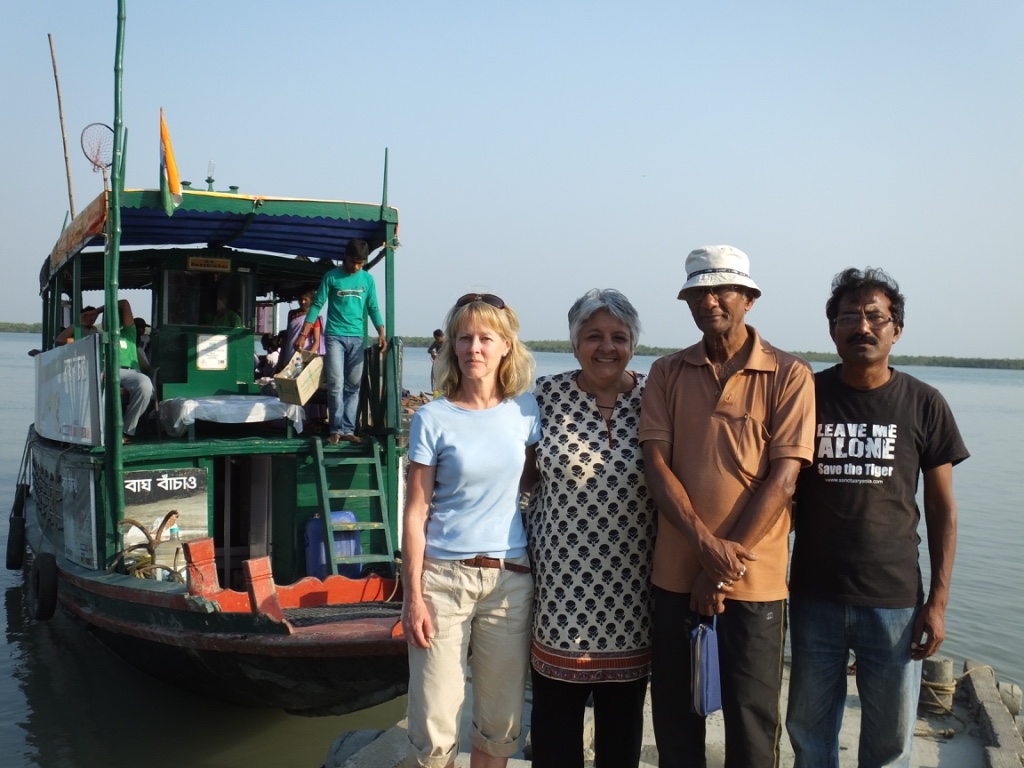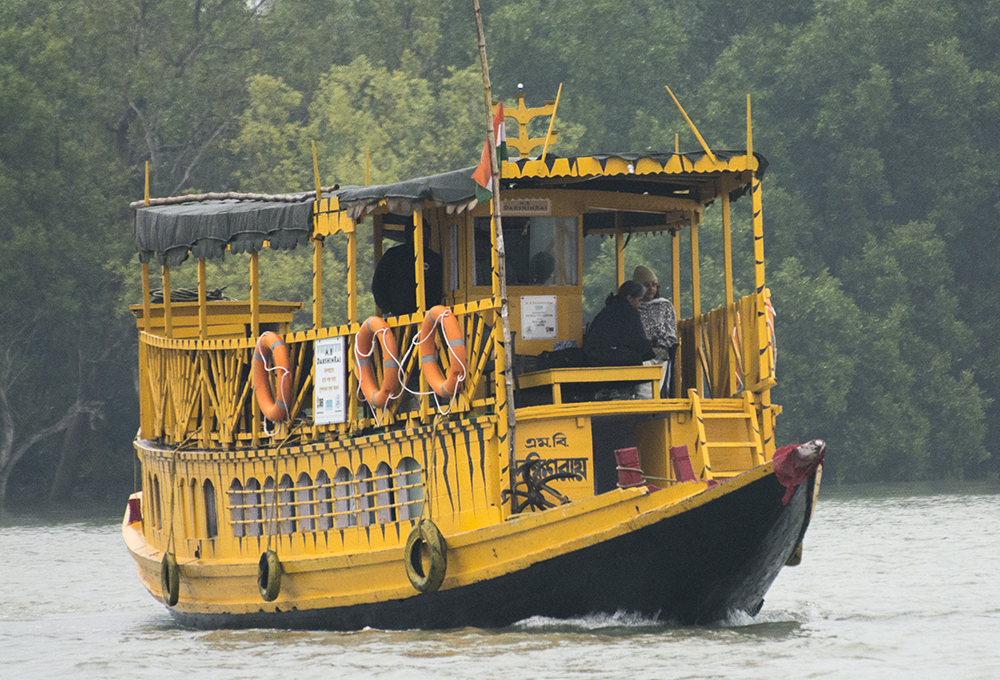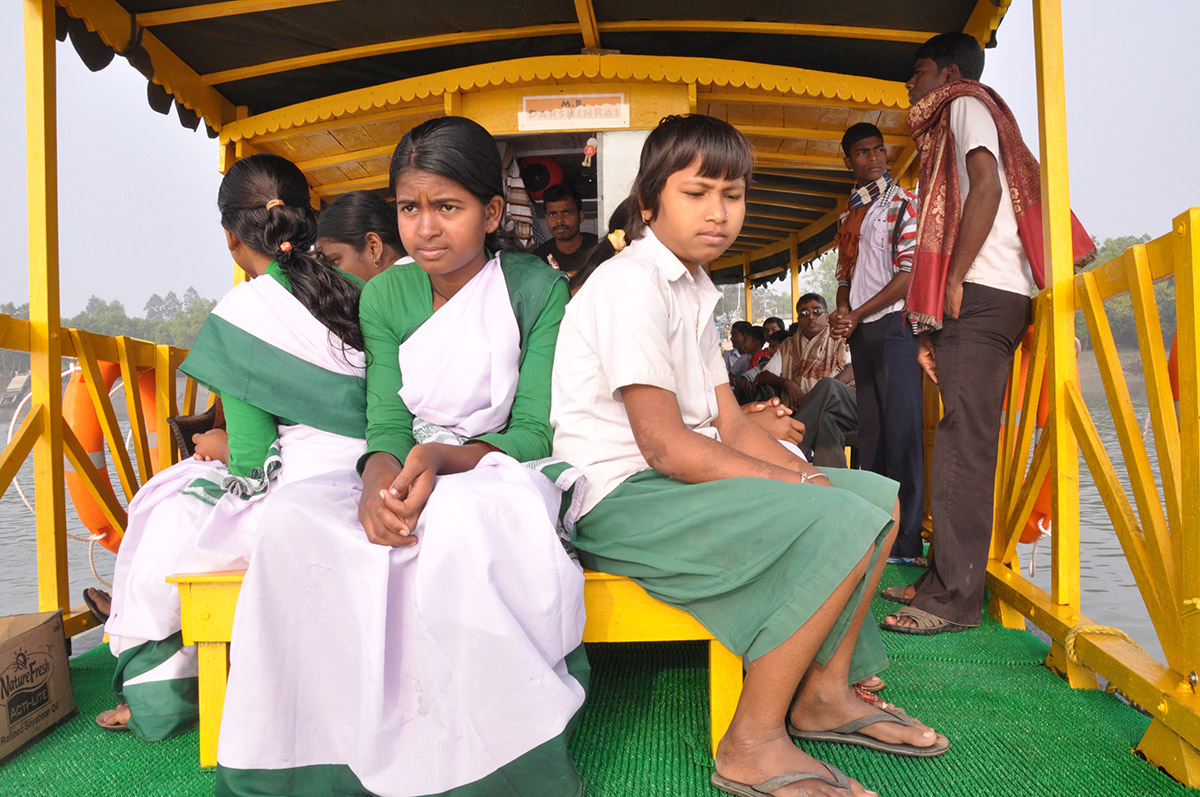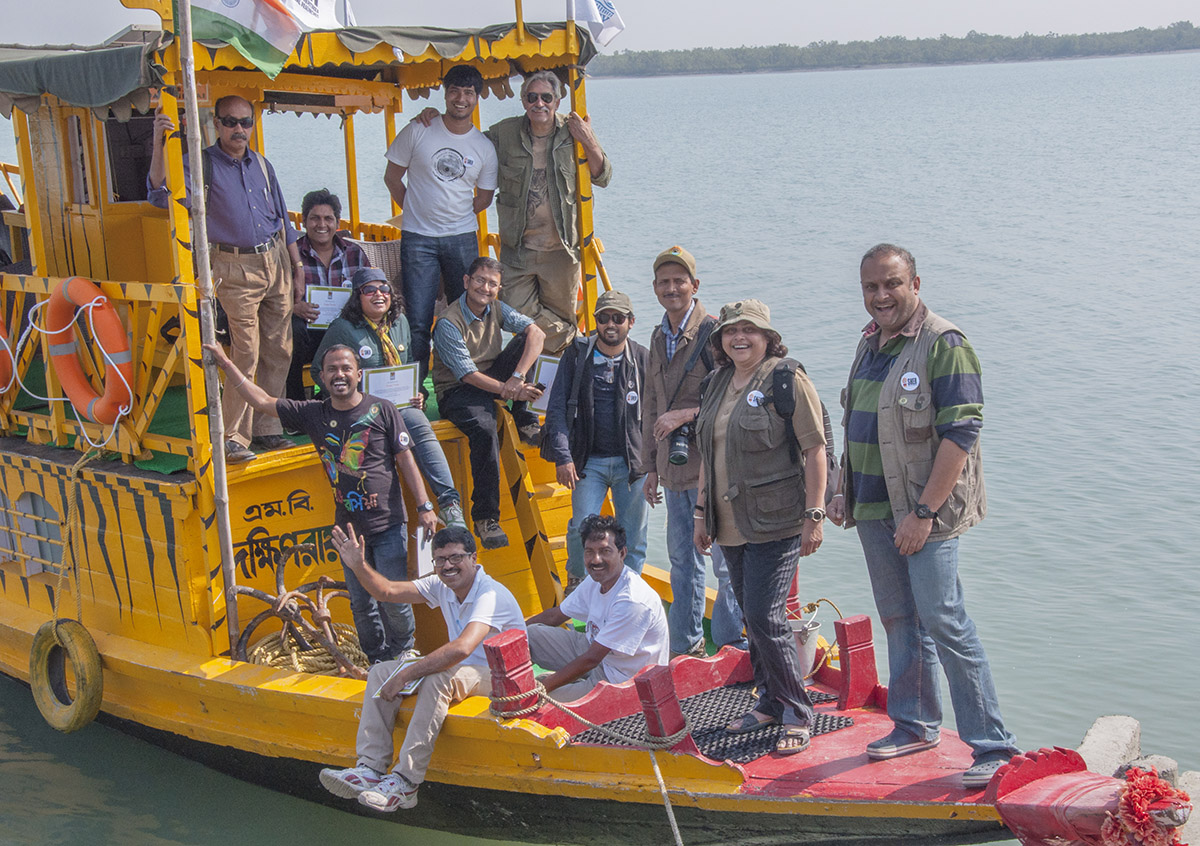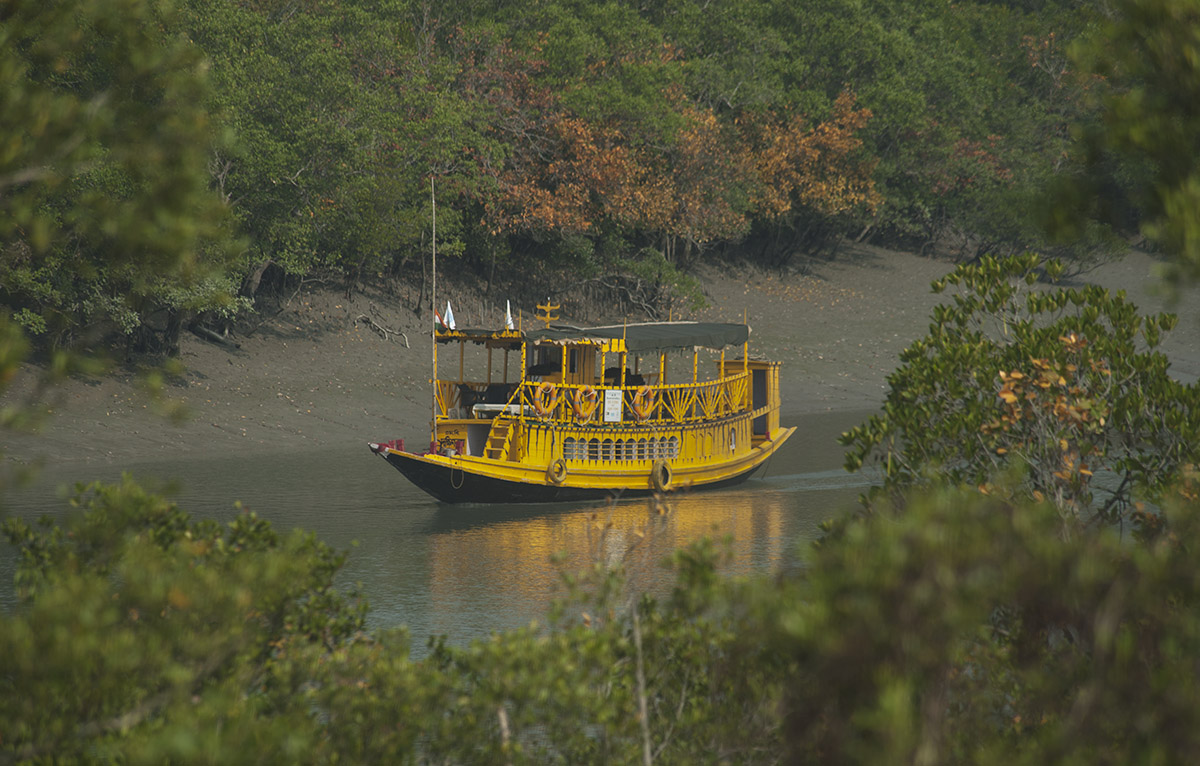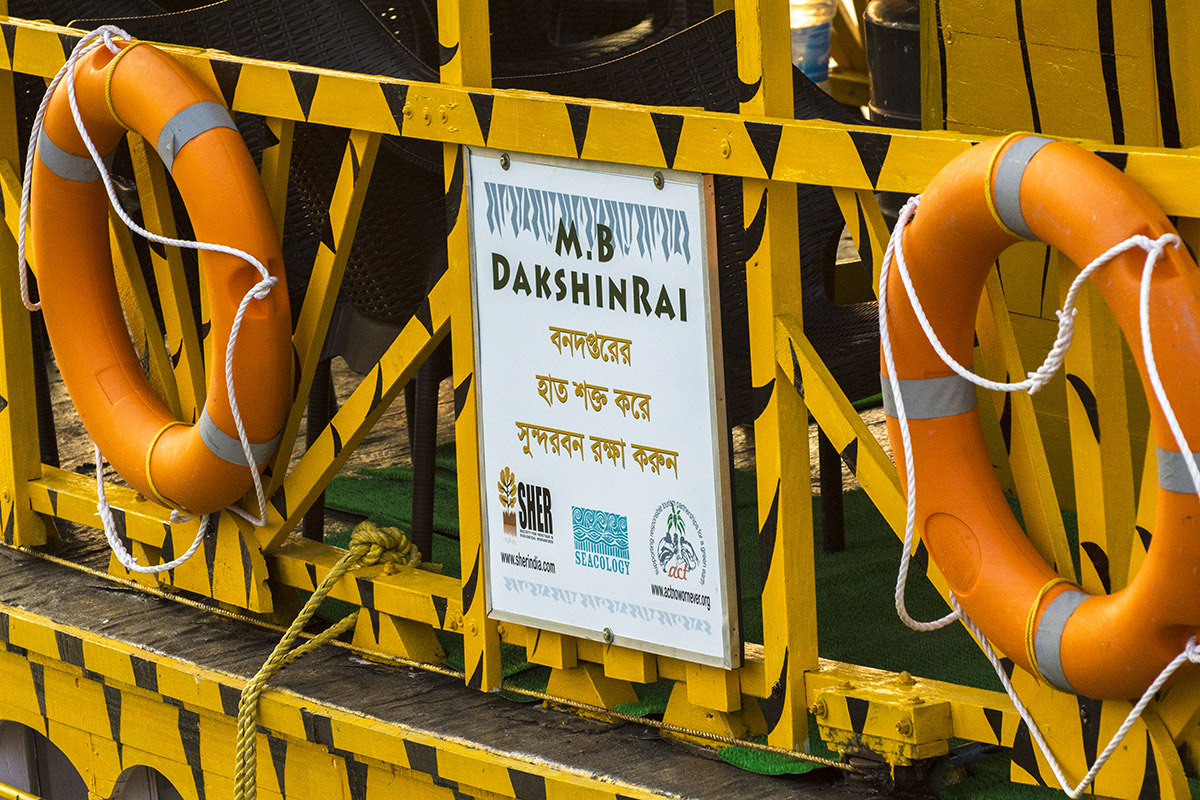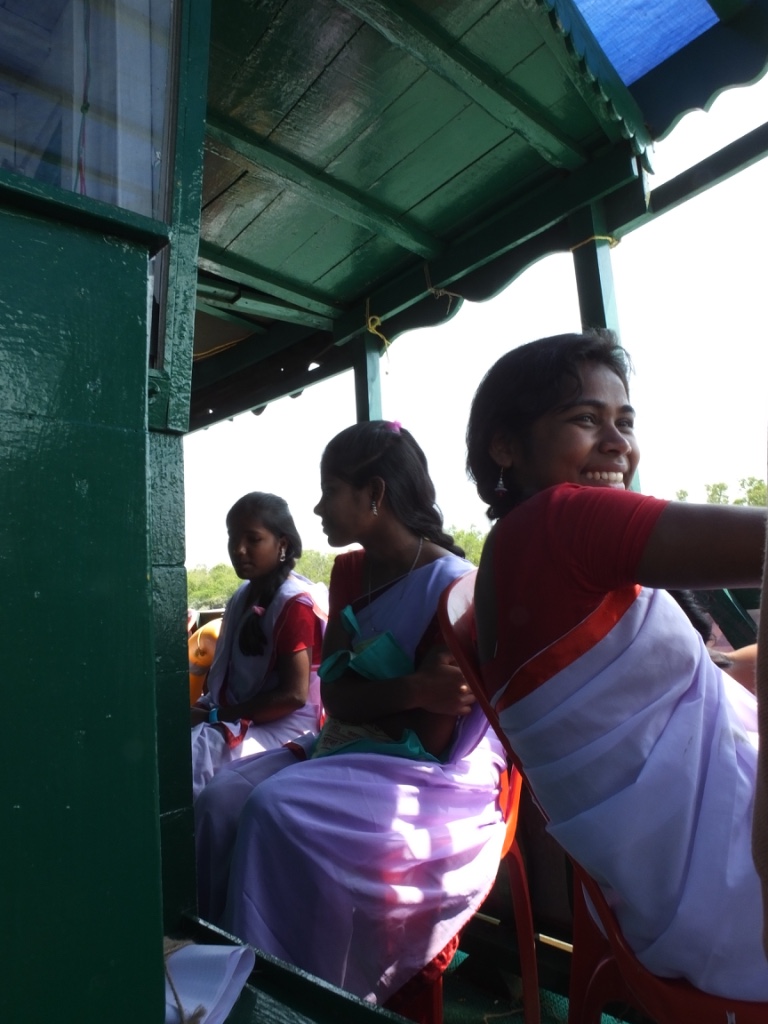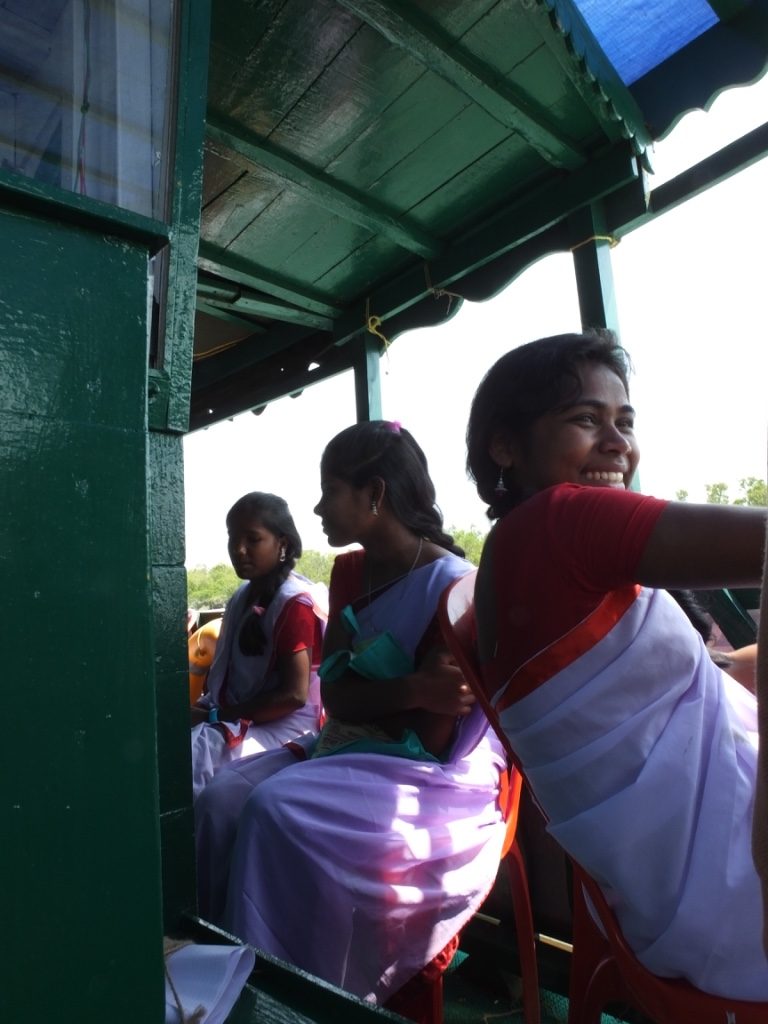The Sundarbans is the world’s largest mangrove forest area—and home to the endangered Royal Bengal tiger. It covers thousands of square miles where the Ganges and Brahmaputra Rivers flow into the Bay of Bengal. Parts are in India, parts in Bangladesh.
Many remote island communities in this ever-shifting delta have no road access, so the only way to reach them is by boat. Working with the Indian organization Help Tourism, Association for Conservation & Tourism, Seacology is funding the purchase and renovation of a boat designed for the delta. Help Tourism will use it as a mobile environmental education center, taking school groups out to learn about this enormous mangrove ecosystem. With luck, they’ll see monkeys, deer, birds, and crocodiles–maybe even an elusive tiger.
Help Tourism will also organize mangrove planting on 123 acres (50 hectares) on the islands of Dayapur, Jamespur, and Santigachi.
The Sundarbans is a national park, tiger reserve, UNESCO Biosphere Reserve, and World Heritage Site. The Indian part of the Sundarbans covers 3,718 square miles (9,630 square kilometers). The tide comes twice daily, deepening old channels and cutting new ones. As a result of the ever-shifting soils, maps of the Sundarbans are never completely accurate.


